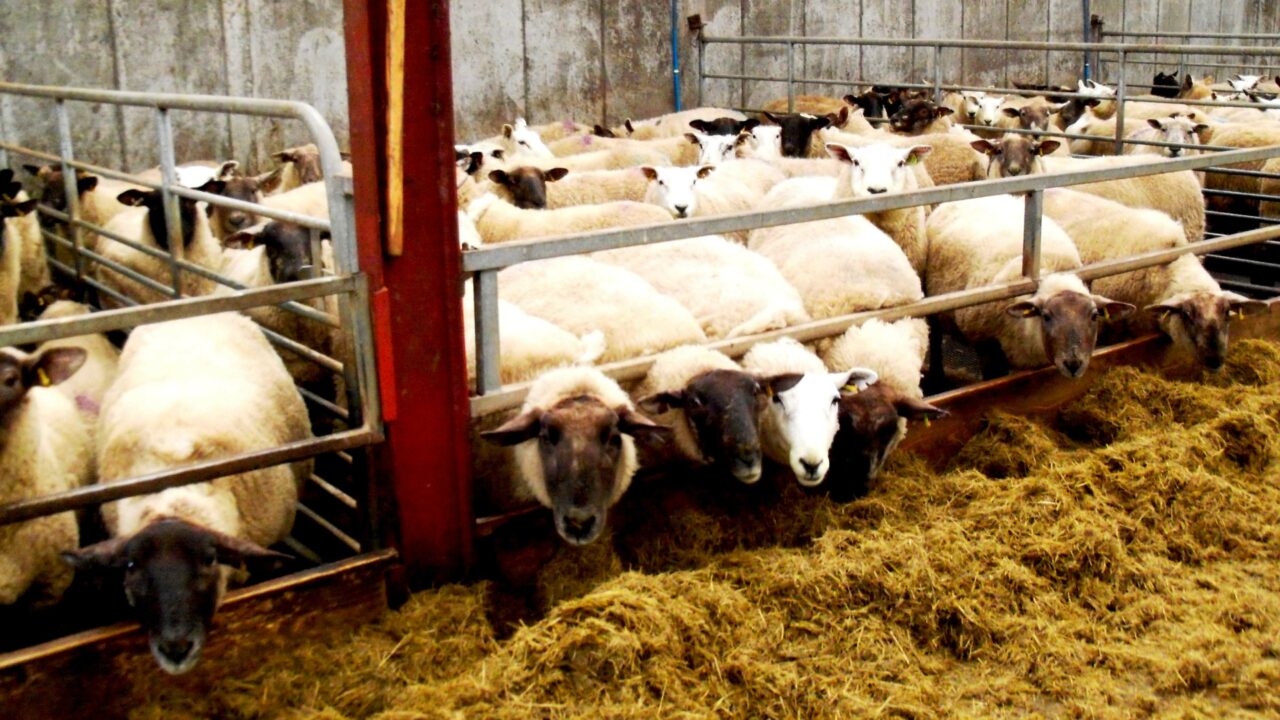With scanning having now taken place of most of the counties mid-season sheep flocks, farmers’ minds have now turned to the management of their pregnant ewes pre-lambing.
Latest reports to AgriLand suggest that the national flock is set for a bumper season this year on the back of fantastic weather throughout the breeding season and backend of the year.
Indeed since last spring it has only been in the past three weeks that some of the flocks outdoors have encountered poor weather conditions.
For sheep farmers scanning has become an essential tool for them in the management of their flocks pre lambing. In the eyes of most farmers and Teagasc the crucial advantage of scanning is that it allows enough time for farmers to segregate and preferentially treat ewes that are carrying triplets.
Teagasc in its advice to farmers at this time of the year said that it is important to start feeding ewes carrying triplets before you intend to start feeding the rest of the flock. It says with moderate quality forage farmers should aim to start feeding triplet-bearing ewes a small amount of concentrates (approximately 0.2kg per head per day) from about 10 weeks prior to lambing.
Teagasc highlights that allowing the ewes to lose a small amount of body weight (maximum five per cent) in mid-pregnancy is beneficial. However, advisors do stress that problems arise if the ewes are already in poor body condition coming into mid-pregnancy or if the loss in body weight is greater than five per cent.
Teagasc stresses that it is important for sheep farmers to remember that it is virtually impossible for ewes to put on a significant amount of body weight in late pregnancy.
Its advice to farmers is to keep a close eye on body condition and house the ewes or start supplementary feeding once grass runs out and body condition starts to deteriorate.
Teagasc notes that it is at this crucial time of the year for sheep farmers when forage analysis comes into its own. It says the amount of concentrates and the timing of when such concentrates should be fed depends on the quality of the forage being fed. With low DMD (less than 65 per cent) forages, twin-bearing ewes need to start getting concentrates eight to 10 weeks before lambing. Getting the forage analysed will be a help to ensure that accurate pre-lambing nutrition is achieved.
Concentrates prices have reduced somewhat from high levels in previous years. This being the case Teagasc still encourages farmers to shop around and look for value.
It says good quality for ingredients for sheep are cereals (barley, wheat, maize and oats), pulps (citrus, beet), soyabean meal and distillers dried grains. Soya hulls, gluten, molasses and rapeseed are also acceptable but tend to be a good bit lower in energy than those ingredients on the first list.
Teagasc also notes for pregnant ewes in late pregnancy, feeding an appropriate mineral vitamin mix is essential.
